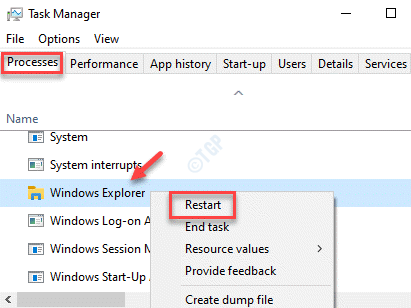NTDLL.dll is important for Windows to work properly, and if something goes wrong, your system might crash or have other issues. Recently, File Explorer NTDLL.dll crashing has become a common issue in Windows, and many users have run into it. A message stating that NTDLL.dll had crashed, followed by File Explorer crashing, was the issue experienced.
In most cases, corrupted system files on your PC cause the file issue you are currently facing. The only way to know if you have a problem is if you have a problem with how your computer works. What can be done to fix the issue where File Explorer NTDLL.dll crashes in Windows? The following is a list of ways to solve the problem of adolescent obesity.
Fix File Explorer NTDLL.dll Crashing Issue in Windows
We will save your time with it because we’ve already discussed the reasons that could be causing the issue. We have listed several ways to fix this issue below:
1. Restart Windows Explorer
The first thing to do is to restart Windows Explorer. Well, if this worked for many other people and it works for you, you won’t need to do anything else to fix the problem. Follow these steps to restart Windows Explorer:
- Ctrl + Shift + Esc is a keyboard shortcut for Windows that lets you open the Task Manager.
- Search for Windows Explorer in the Processes tab. Right-click on it and then click Restart.

2. Run SFC Scan
If restarting Windows Explorer didn’t help, you can run the SFC check. This helps fix any damaged files causing File Explorer NTDLL.dll crashing issues in Windows 11.
Press the Windows + R key combination, type CMD, and then press Ctrl + Shift + Enter. This will run the Command Prompt as an administrator.- Here, type sfc /scannow and hit Enter.
- Now, the SFC scan will begin. Wait until the process is done and your PC restarts.
3. Update Windows
This issue can be resolved by updating Windows to the most recent version. If any of those were causing the issue, this would fix it. Windows Update comes with bug fixes and driver updates. You can edit your Windows by following the steps below:
- Open the Settings app through Windows + I keyboard shortcut.
- Click on the Windows Update tab on the left, then click on the Check for Updates button.
- All the available updates will be listed here; download and install them. If no updates are available, that means your Windows is up-to-date.
- After installing the updates, restart your PC.
4. Run System Maintenance Troubleshooter
You can fix this issue by running the System Maintenance Troubleshooter. This will fix any issues your Windows PC is currently facing. Follow the steps listed below to use this tool:
- Press the Windows key, search for Perform Recommended Maintenance Task Periodically, and click on the very first option that appears.
- Click on Next and follow the on-screen instructions to run System Maintenance Troubleshooter.
5. Update Graphics Driver
As we’ve already discussed, this issue can be caused by outdated graphics drivers. We recommend updating your graphics driver to the most recent version and checking to see if the issue still exists. The following is a list of the steps to take to update your graphics driver:
- Right-click on the Start icon and then click on Device Manager.
- Expand the Display Adapters section by double-clicking on it.
- You will see your graphics driver here. Right-click on the driver, and then click on Update Driver.
- Now, click on Search Automatically for Drivers to update the drivers from the internet.
Note: If your PC has a built-in GPU and a separate GPU, you will see two drivers here. If so, you’ll need to update both drivers.
6. Clear File Explorer History
The update could also be because the File Explorer History is broken. Clearing the history in File Explorer should help fix the issue. Follow the steps listed below to do so:
- Press the Windows key, search for Folder Options, and open it.
- Head to the General tab, and under the Privacy section, click on the Clear button.
- Click on Apply and then on OK, and then restart your PC.
7. Clean Boot your PC
You can restart your PC in safe mode. The only way to determine whether or not a virus causes a problem is to have the user’s computer run through the test process. Follow the steps below to cleanly boot your computer:
- Press the Windows key, search for System Configuration, and open it.
- Here under the Services tab, check the checkbox for Hide all Microsoft Services and then click on Disable all button.
- Now, head to the Startup tab and click on the Open Task Manager option.
- You will see a list of all startup programs here. Right-click on the program and then click on Disable. Do this for all the programs here, especially those with high impact.
- Now restart your PC to boot it without third-party services and programs.
You can now check what program or service was causing this issue and then delete them.
Final Words
Follow the debugging steps above to fix the File Explorer NTDLL.dll crashing issue in Windows. The steps above should fix the issue, but you must reset your PC if File Explorer still keeps crashing. If nothing works, you can either Reset your PC or reinstall Windows.